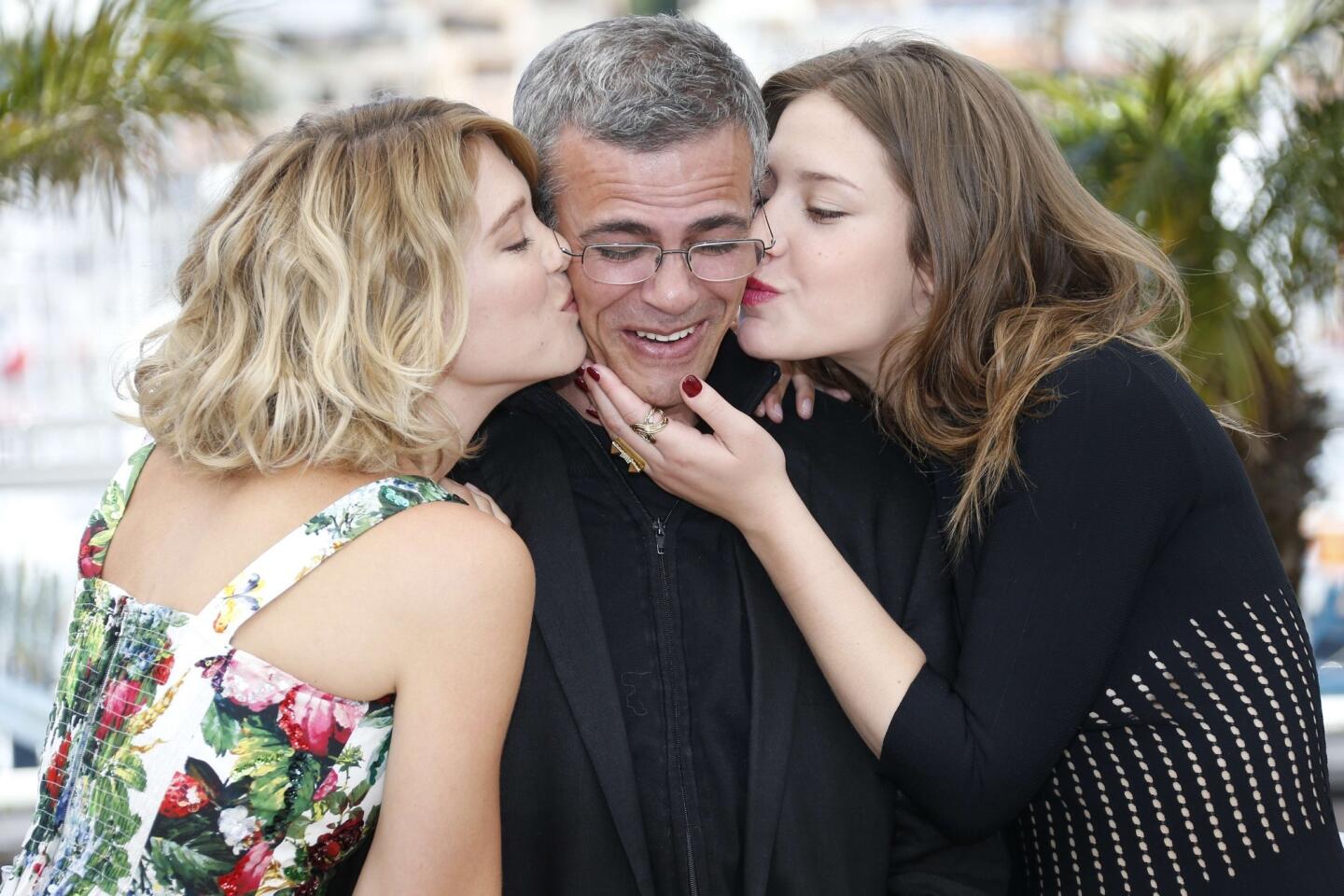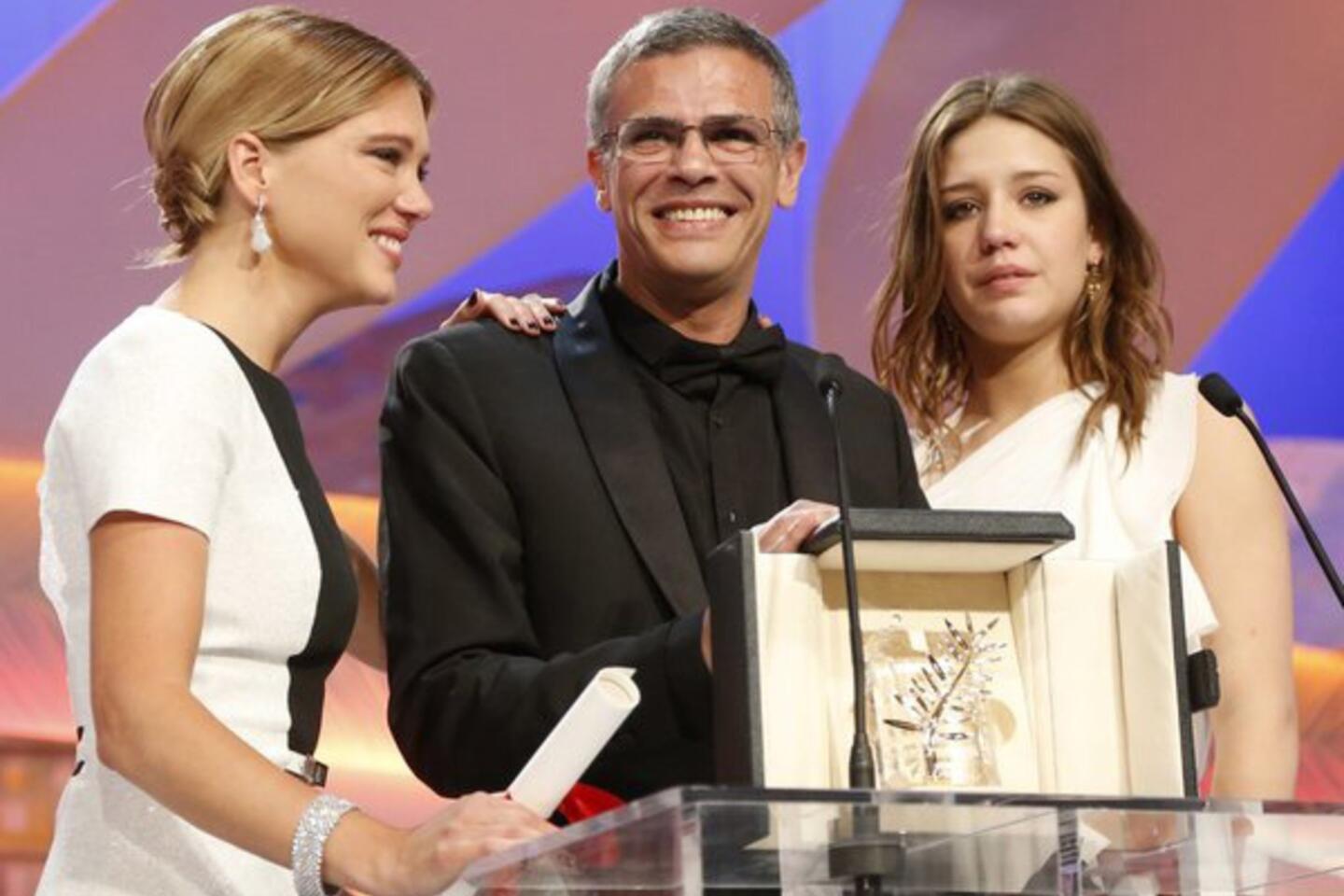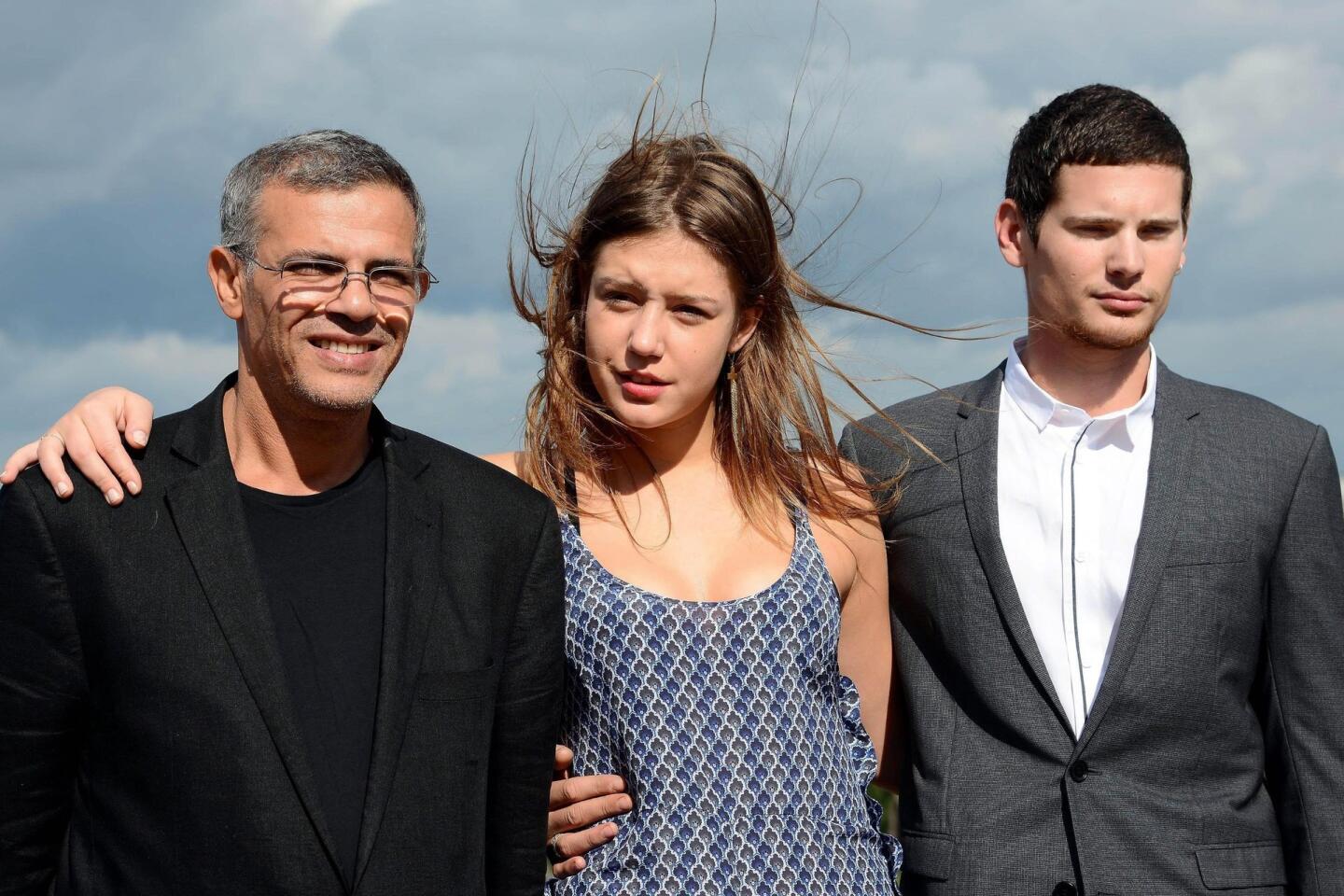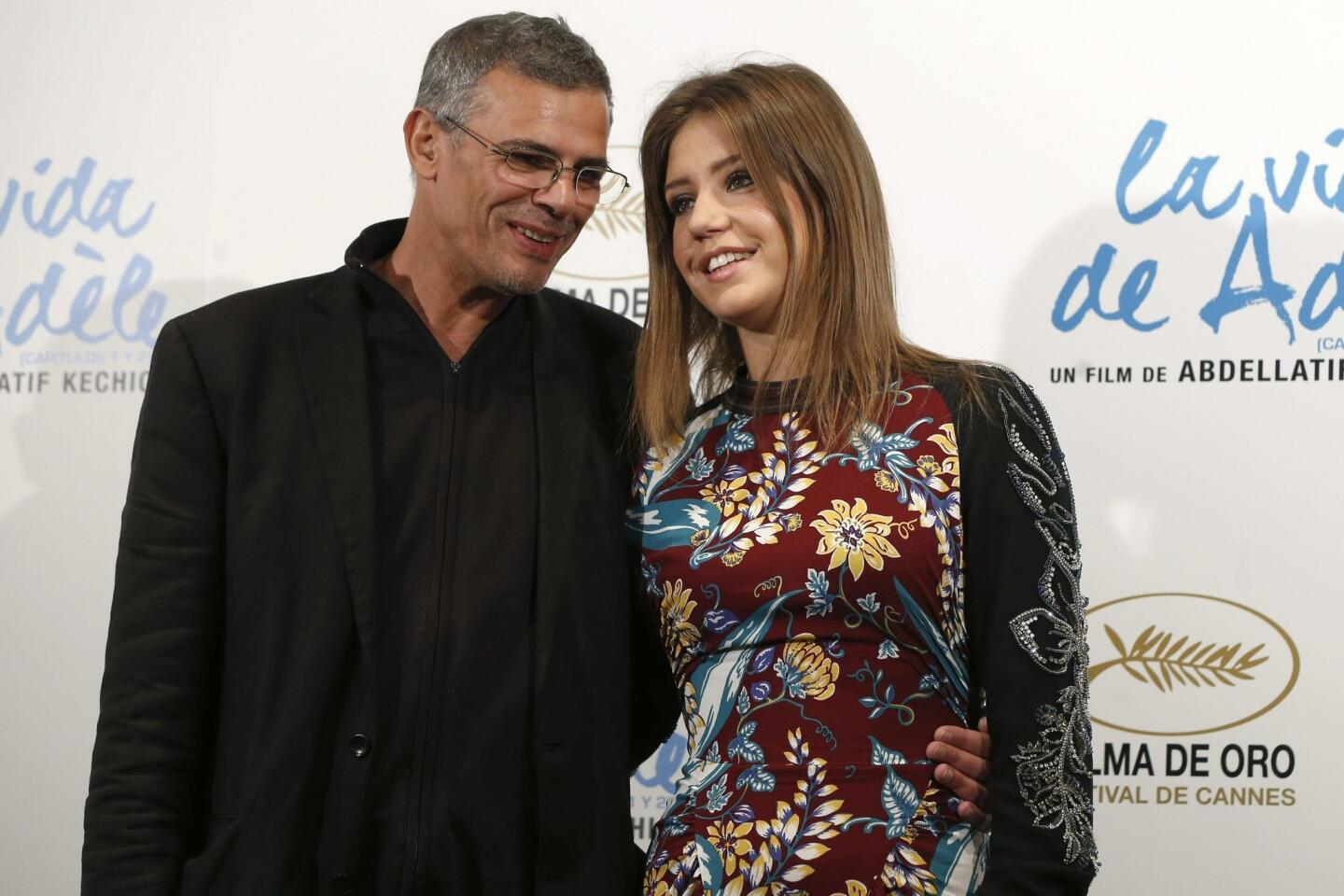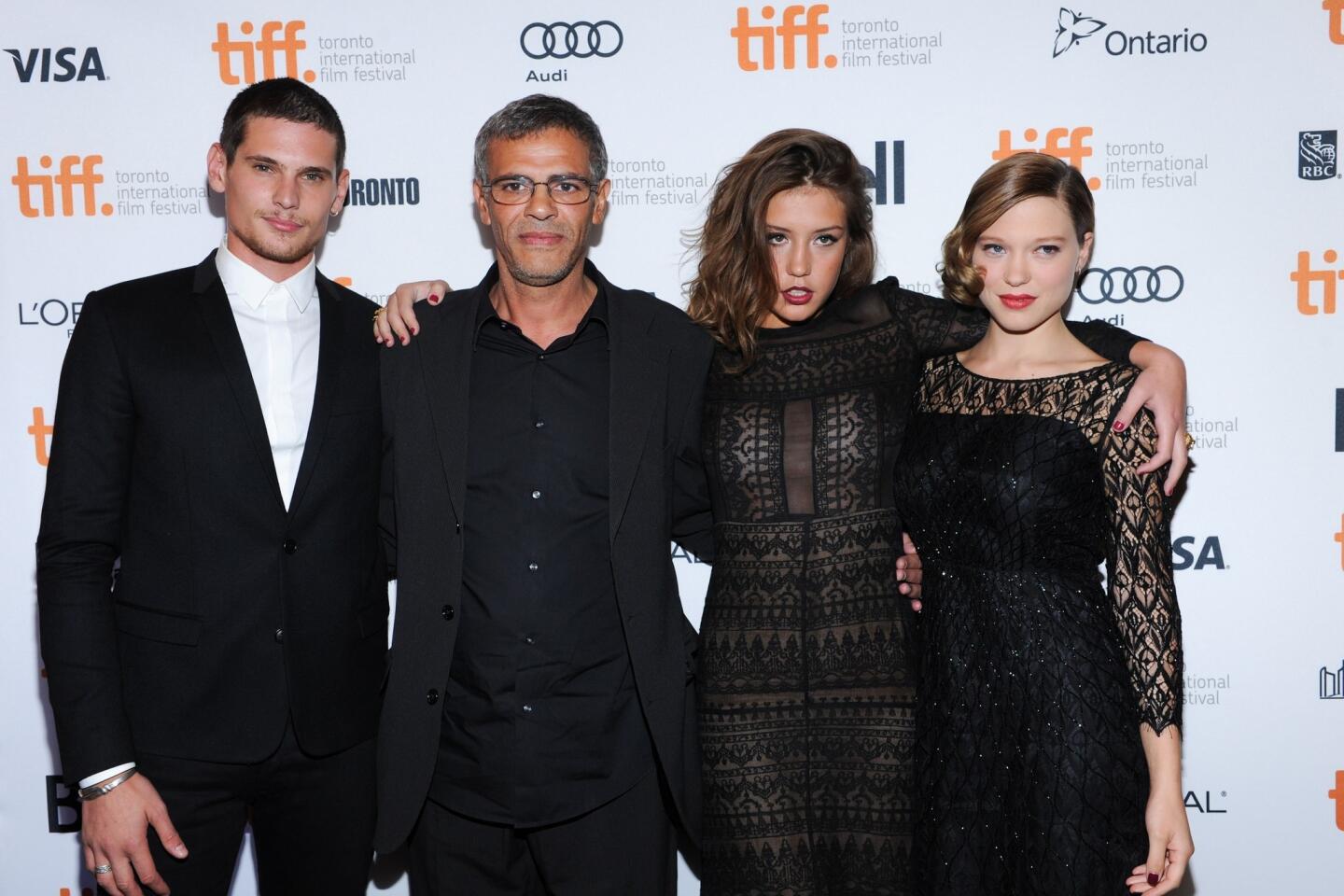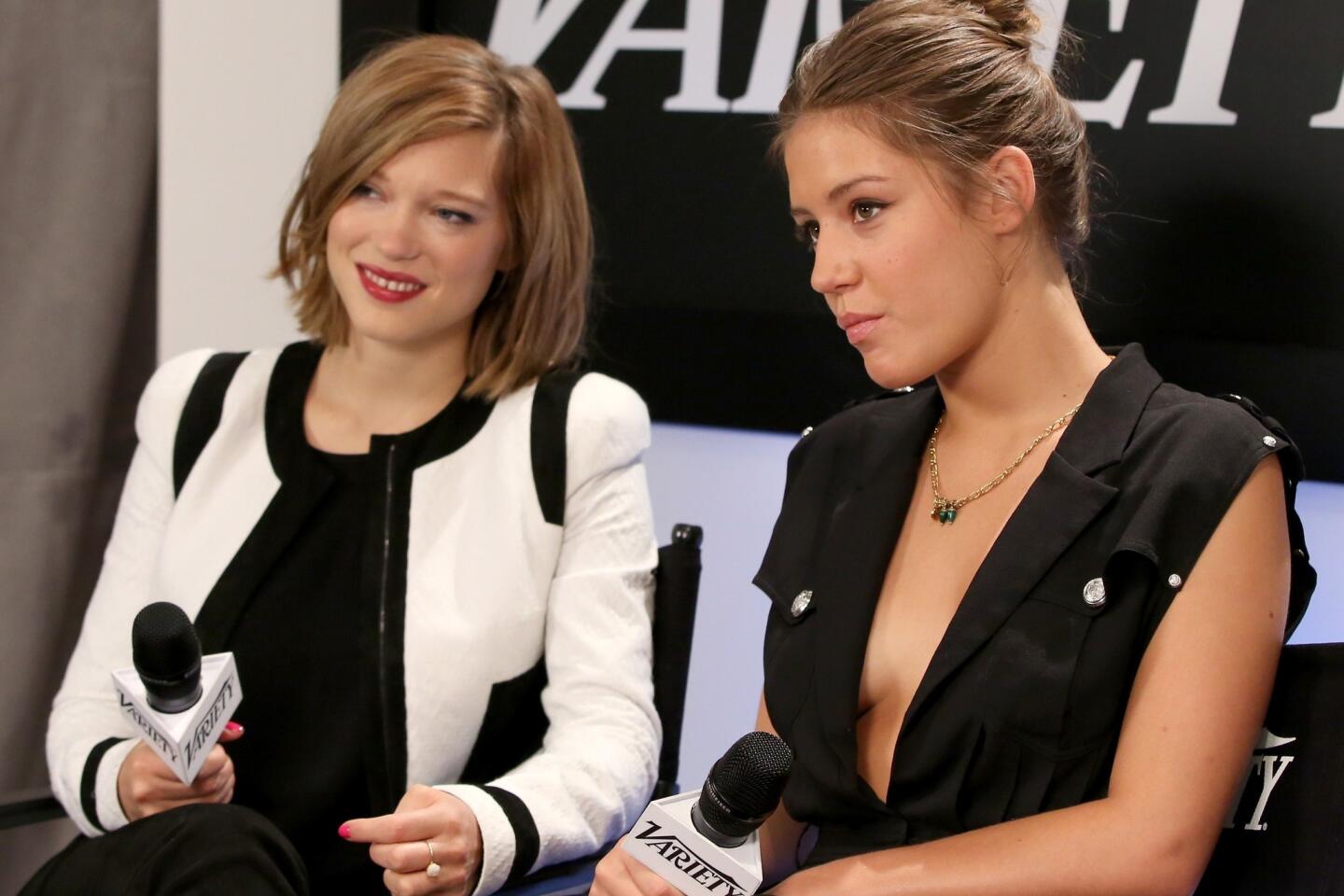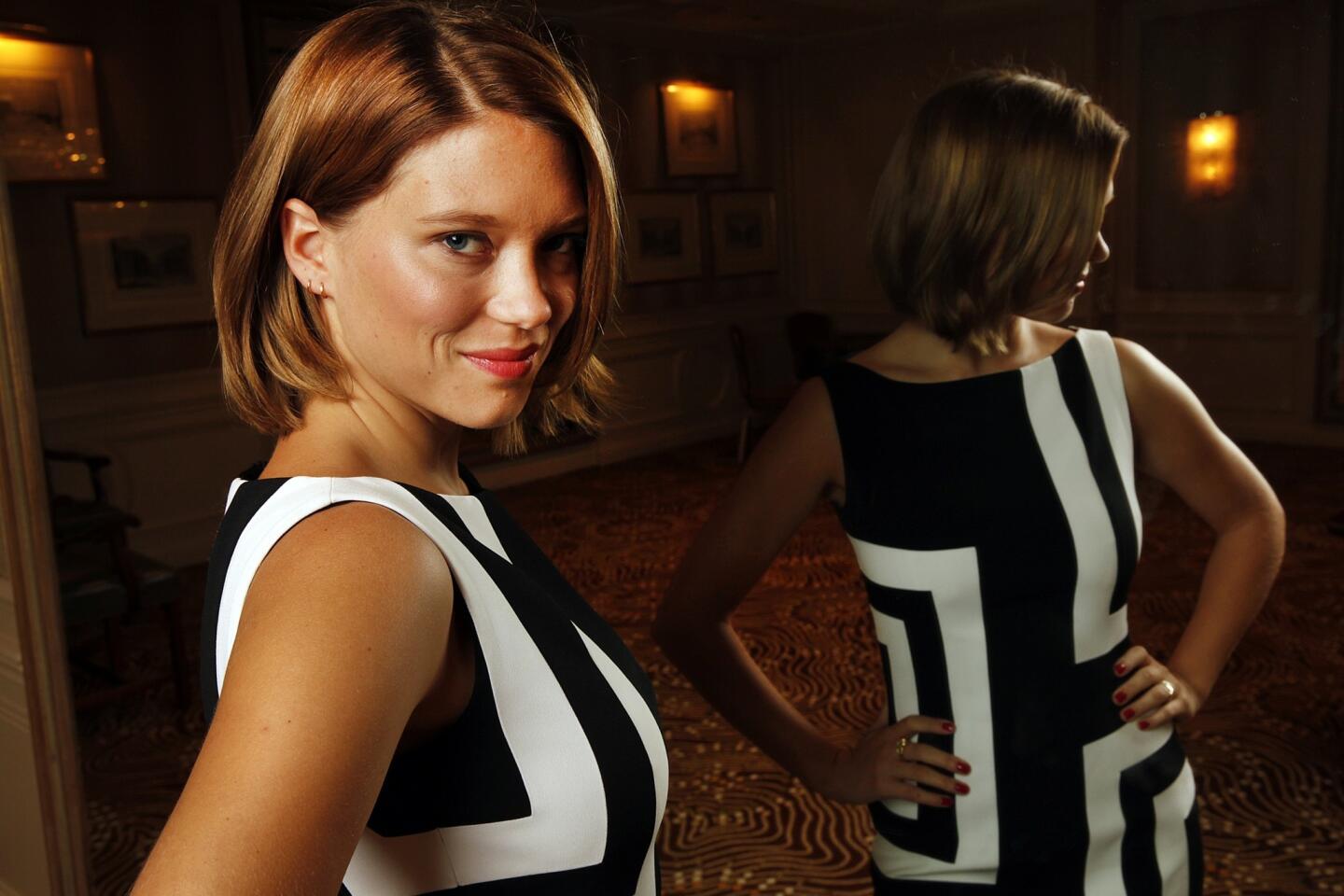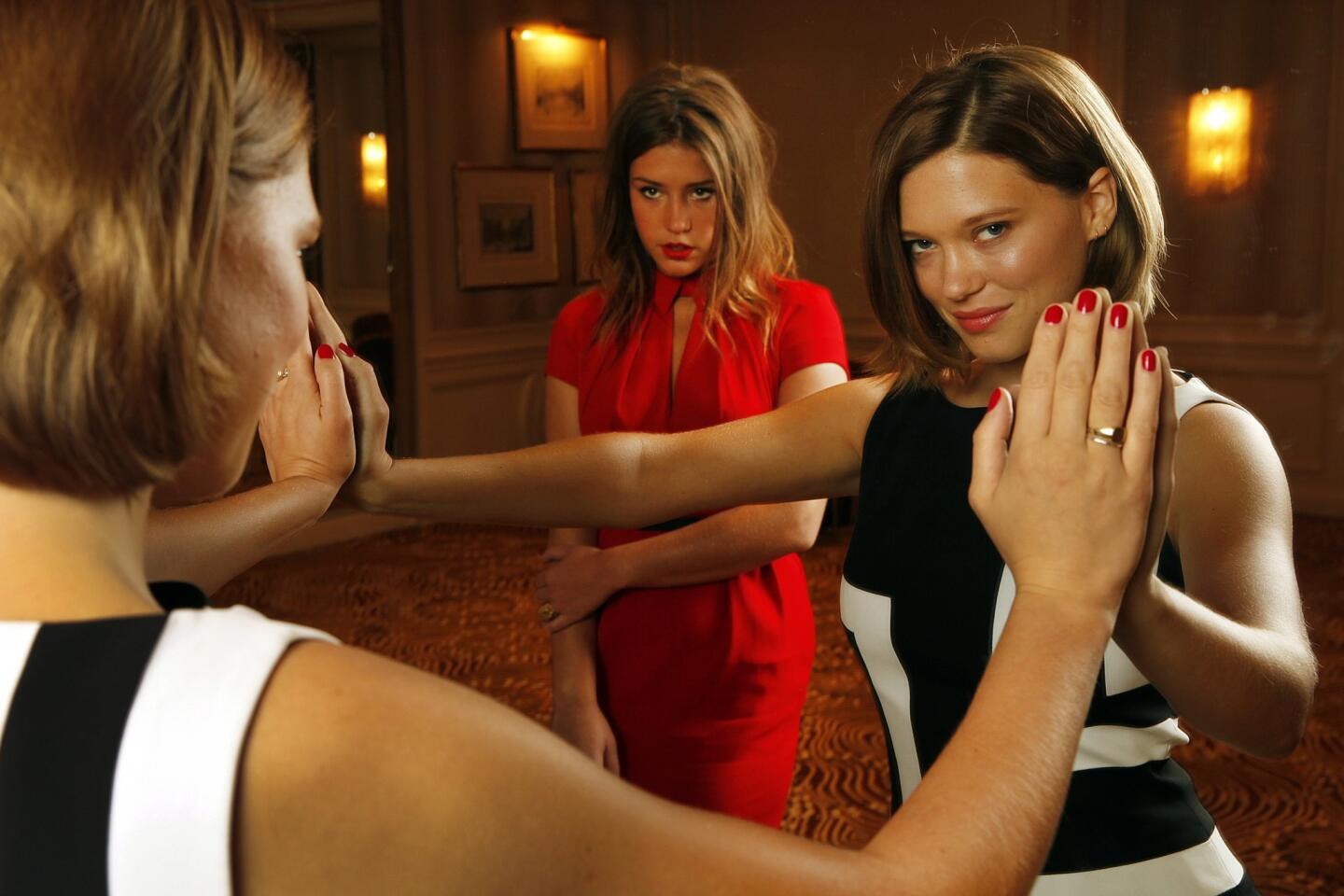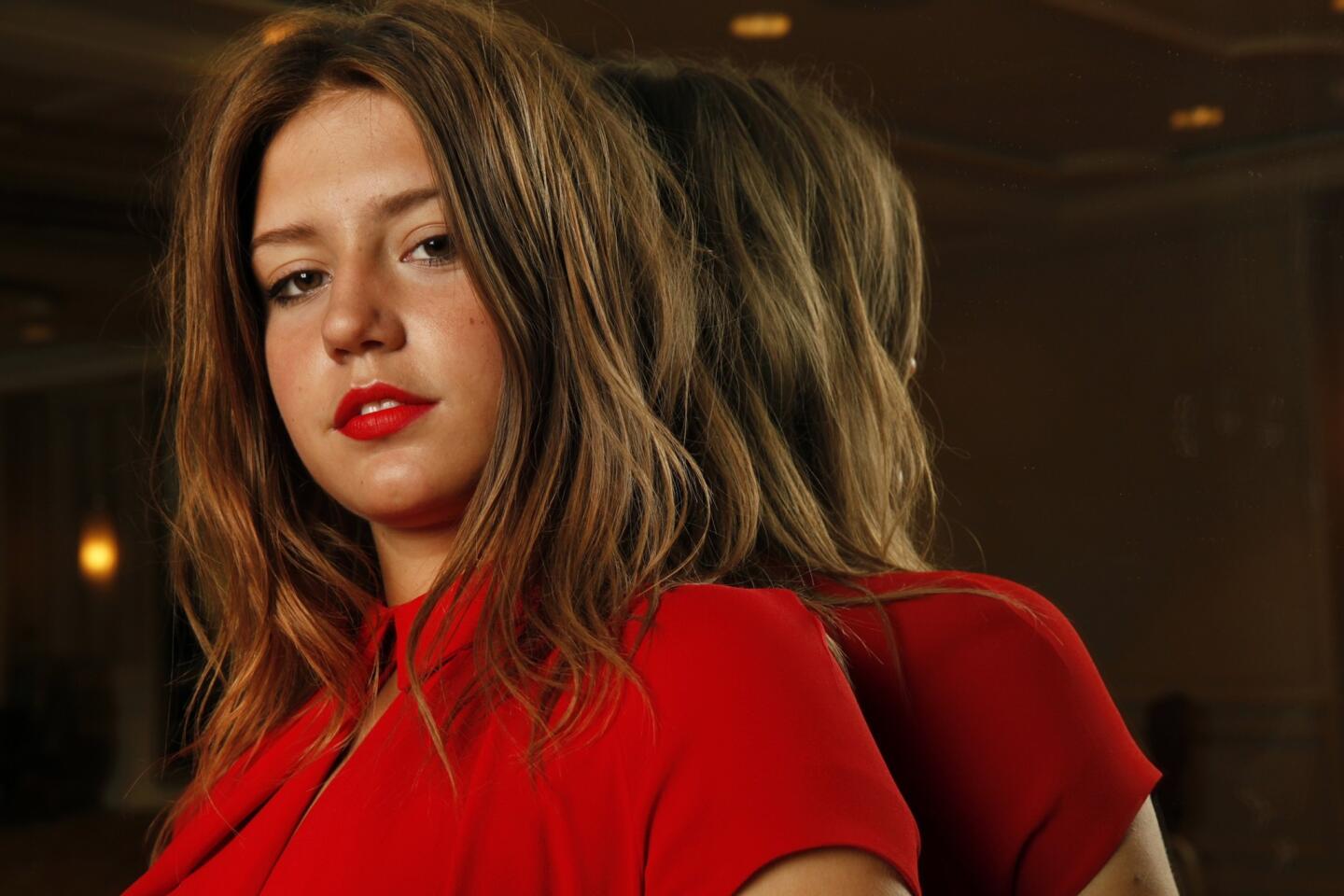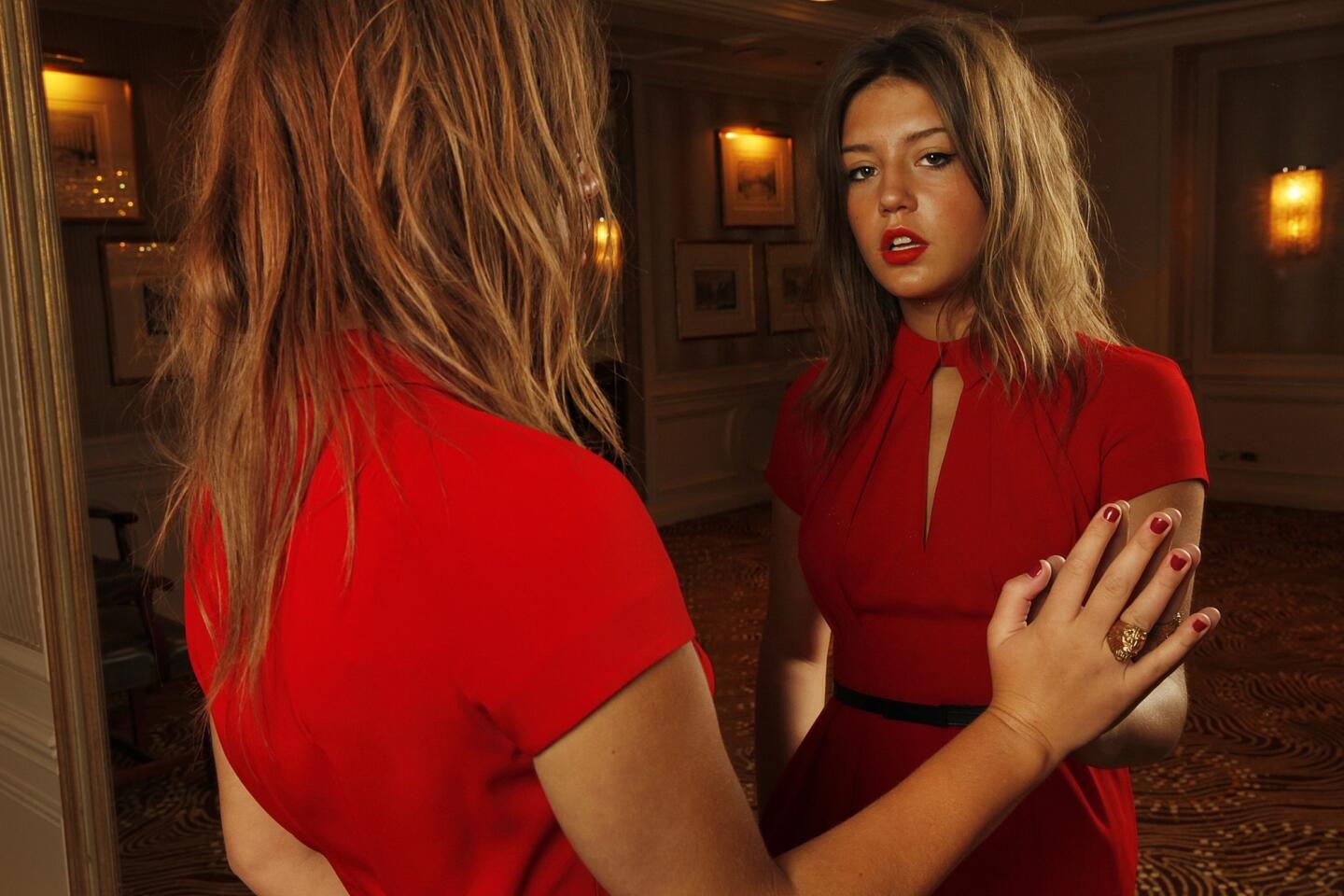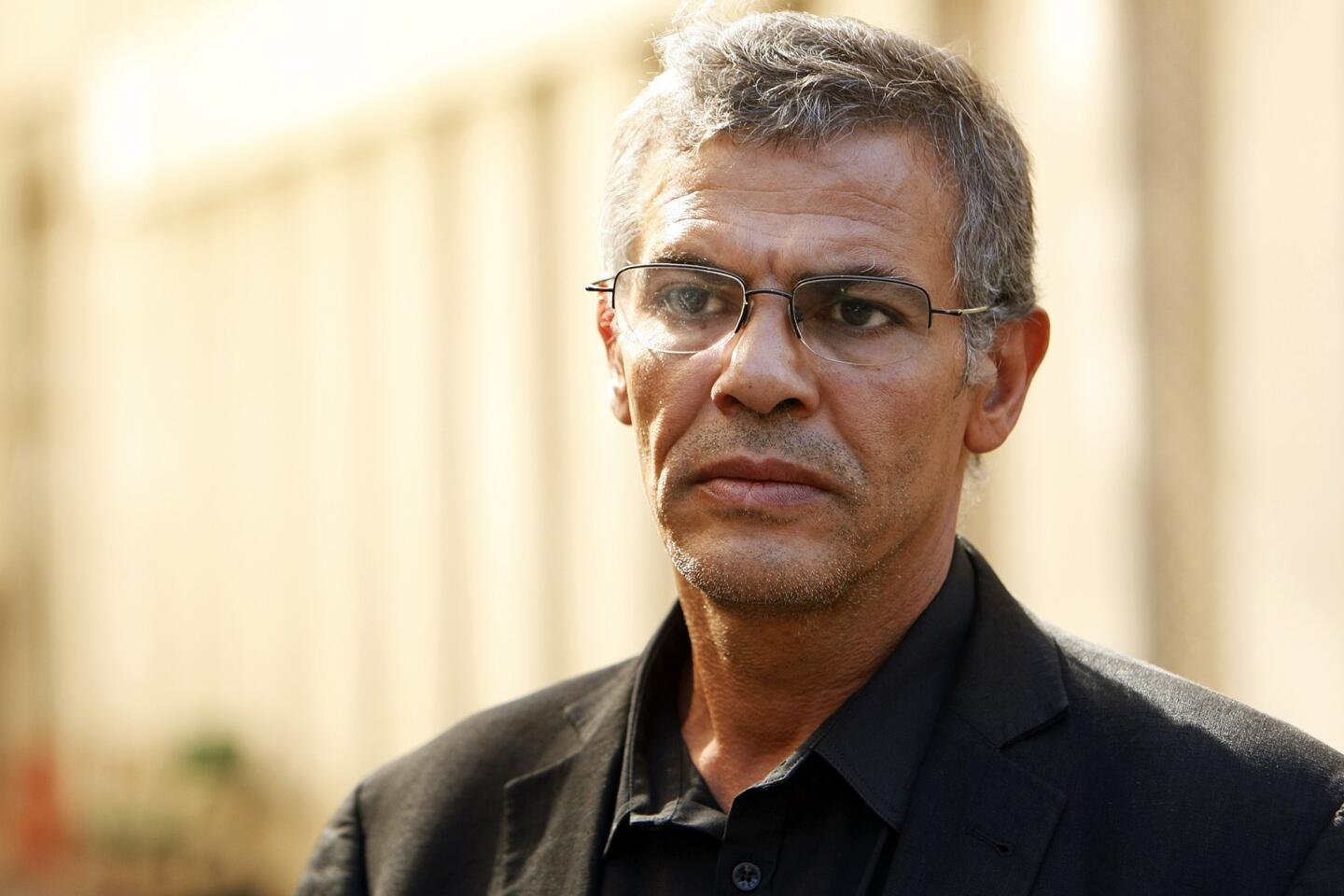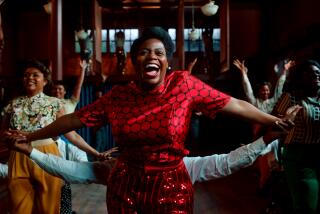Review: Love at its finest in ‘Blue Is the Warmest Color’
- Share via
The moral of “Blue Is the Warmest Color” is simple: Sex without love is nothing; life without love is even less.
French filmmaker Abdellatif Kechiche’s story of sexual awakening and real love stretches over 10 years. Loosely based on Julie Maroh’s superbly illustrated graphic novel and adapted for the screen by Kechiche and Ghalya Lacroix, it traces the life cycle of a relationship beginning to end. The telling is beautiful and explicit. The truth of its emotionally raw, romantic drama is eternal and universal.
The story starts with Adèle (Adèle Exarchopoulos), a 15-year-old high school student in the midst of figuring out life. It soon intersects with Emma (Léa Seydoux), a college art student. The younger girl wants to teach kindergartners; the older is an emerging painter of some significance. Adèle’s family is working class. Emma’s the intellectual elite. They are both beautiful but in different ways — Adèle, completely unaffected; Emma, her hair streaked blue, quite aware of her effect. In matters of self, Adèle is unsure, Emma is certain.
PHOTOS: ‘Blue Is the Warmest Color’: The women, the scenes, the director
It begins with a glance on a busy street. The moment quickly passes, only to be picked up again later. Although both of their stories are explored, the film is driven by Adèle’s journey. It is arguably the more difficult. It is certainly the most painful.
Kechiche, whose work has long interwoven sexuality and literature, sets the agenda in one of Adèle’s classes. The professor is dissecting “The Life of Marianne,” Pierre Marivaux’s prescient 18th-century novel on what women want. They’ve come to the part where Marianne realizes there is something missing in what she feels, an empty place. The students struggle to define exactly what that emptiness might be.
That is Adèle’s struggle as well. Pretty and popular, she is pursued by the perfect guy — confident, good-looking, smart and sensitive. Their flirtations quickly lead to sex. But the image of the blue-haired girl Adèle passed on the street lingers, invading her dreams, arousing her passions.
PHOTOS: NC-17 films: Why they got the rating
Adèle and Emma are soon together again, and much of the film will be spent on their connection both sexually and emotionally. The look and the dialogue have that rare quality of being ethereal and at the same time fully grounded. The realities of the relationship cross sexual, intellectual and social lines precisely and provocatively. But the richness of the film comes in the ordinary details that get equal focus — the way a plate of spaghetti is consumed or a stray hair brushed out of a face.
The film not only won the prized Palme d’Or for its director at Cannes this year, but in a relatively unprecedented move, the actresses won as well. They should have; both performances are exceptional.
Still, there are inherent difficulties for this much-praised film. The sex scenes are graphic, extensive and earned “Blue” an NC-17 rating. The affair is between women, but “Blue” does not play like an exploitation movie about lesbians in love. It’s an intriguing and intimate look at two people at their most elemental and vulnerable.
As unrestrained as Kechiche is in filming the love scenes, he shows a good deal of care in handling the issue of sexual orientation. It’s always there in his work, starting with his 2003 breakout, “Game of Love and Chance.” But he’s getting better at the nuances of the narrative.
PHOTOS: Celebrities by The Times
There are the expected moments — the taunts of Adèle’s classmates when they first spot Emma. More telling is Adèle’s internal conflict. She is smitten yet fearful. Unwilling to tell her parents or her friends about Emma, even as they become a couple, move in together, years pass.
That hesitance will lead to some of the film’s friction. But the distance in their ambitions, the intellectual drifting apart, is what begins the fraying. Much attention is paid to the shape of that particular pain — Adèle’s face etched by tears, eyes red, nose running, desperation palpable.
Seydoux, 28, who will be more familiar to U.S. audiences from her roles in “Inglourious Basterds” and “Midnight in Paris,” brings a sort of existential elegance to Emma. Though the character is clearly the stronger one, the tougher one, the actress allows room for softness as well.
Exarchopoulos, only 19 though she’s been acting since 2007, is remarkable to watch. She so completely embodies the essence of an unconscious and earthy beauty that it feels as if we are spying on an actual life. What we are most certainly seeing is an original talent.
The look of the film is stunning as well. As is Sofian El Fani’s cinematography. The bodies, whether in the heat of passion, the stillness of sleep or walking along the street, are shot with an eye to aesthetic perfection.
Critical raves have followed “Blue” as it has made its way around the festival circuit. Controversy too — the actresses and director have had very public disagreements on the difficulties of making the film. Whatever their divides, what we see on-screen is a near-perfect film, love at its finest and its most fraught.
‘Blue Is the Warmest Color’
MPAA rating: NC-17 for explicit sexual content.
Running time: 2 hours, 59 minutes, in French with English subtitles
Playing: At ArcLight Hollywood; Landmark Theater, West Los Angeles
More to Read
Only good movies
Get the Indie Focus newsletter, Mark Olsen's weekly guide to the world of cinema.
You may occasionally receive promotional content from the Los Angeles Times.
